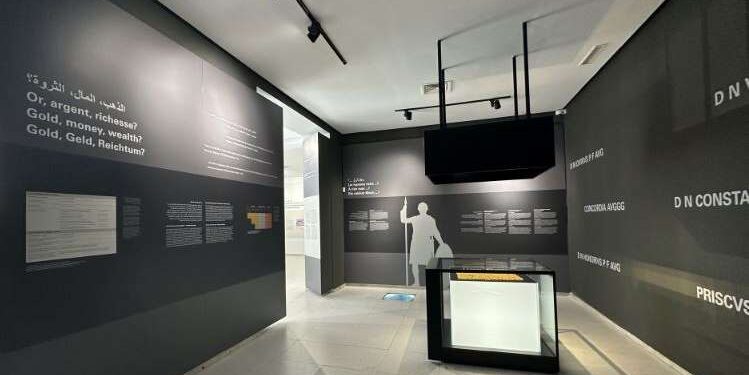The National Museum of Bardo welcomes the exhibition on Monday, October 2 on Monday, October 2, the “Le Trésor des Coins de Chemtou”, under the aegis of the Ministry of Cultural Affairs.
On this occasion, Minister Hayet Guettat Guermazi will inaugurate the new museum room, dedicated to the Treasury of Chemtou, in the presence of Peter Prügel, ambassador of the Federal Republic of Germany, and Philipp von Rummel, secretary general of the German Archeology Institute (DAI).
Discovered a few years ago, this treasure is made up of 147 gold pieces and a silver piece which, since the fourth century, rested in a jug. The new museum hall will now discover these ancient pieces as well as the jug that contained them.
Chemtou (photo Salah Jabeur)
Fruit of Tuniso-German cooperation, the Chemtou museum was also created in 1998 on the ancient city site which was renowned for its marble. This archaeological museum, closed since the attack on the Bardo in 2015, was reopened in December 2019.
This Chemtou museum includes unique artefacts, including large marble pieces. The archaeological area in which the museum is located was the scene of excavations supervised by teams of German researchers from the DAI.
This research revealed the existence of a number of monuments buried underground including a Numidian city dating from the fourth century BC. The excavations continue in Chemtou in order to enhance, all the potential of this site in the northwest of Tunisia which has not revealed all its secrets and could with the neighboring site of Bulla Regia, constitute a catalyst for cultural tourism in the Jendouba region.
For the record, Chemtou is an ancient city with numerical origins built below a monumental altar where the Roman deities were then venerated. The ancient lookus was nicknamed the mountain of marble and it was there that the famous Marmor Numidicum was extracted from which the quarries were an imperial property.
The ancient city was in Roman times, endowed with a military camp which also served as a prison. Under the control of soldiers, sentenced to forced labor and quarry slaves, were accommodated in this prison which also had workshops where utility objects were made from marble waste.
It should be noted that the teams of German researchers have been present on the site since 1968 and have largely contributed to the excavations and the creation of the museum. This exhibition of October 2 at the Bardo Museum is timely to recall the permanence of this cooperation between Tunisia and the Federal Republic of Germany.
Finally, it would be the Hadrian emperor who would have ordered the construction of a Roman road for the transport of chemtou marbles to Rome via the ancient Tabarka.
The ancient Thabraca was indeed the port from which the wheat of Béja, the wood and the beasts of the Khroumirie forests as well as the chemtou marble were exported.
After having coated up to Carthage, the vessels thus loaded could take off towards Italy. Before that, heavy carts transported the precious marble through the dense forests of Khroumirie to the port.
General view (photo Salah Jabeur)
Under the Romans, Chemtou portrays the name of Simitthus. This city was then nicknamed the mountain of marble. And it was in the sides of this mountain that we extracted the famous “Marmor Numidicum” of the ancients.
This yellow marble of Chemtou, with nuances in any other, is today called “Giallo Antico” in Italy. Like a reminiscence of this time when the pale color of this marble made it a most popular material in Rome.
From a Numidian foundation, Chemtou is known for his marble since the reign of Miscipa, Berber prince at his peak in the 2nd century BC. Then the Romans made marble careers an imperial property and drawn this road which crosses mountainous areas.
One route twice millennium
To join Tabarka, you had to go through Bulla Regia, Ain Berber and Oued Ghezala, a tributary of Oued Bouhertma, the Armascla of the Ancients. Then, we joined Sidi Dhwiw and the Domaine de Cheikh El Arbi, not far from Fernana and her secular oaks.
Chemtou museum
Very secret, this road still contains unexplored Roman ruins. Like these vestiges of house that mark a stopover gîte to Henchir Edamouss. Like the remains of an amphitheater and a triumphal arch in Ain Bouhaja.
Like the scattered ruins of Ain Charchara. Like the military terminal of El Merij. The second stopover gîte on this marble route is not far from Borj El Hamam, this place that Ptolemy called Aquae Calidae for its source of hot water. For history, Chemtou’s marble was, according to tradition, yellow like Taché de Safran and it adorned public monuments.








